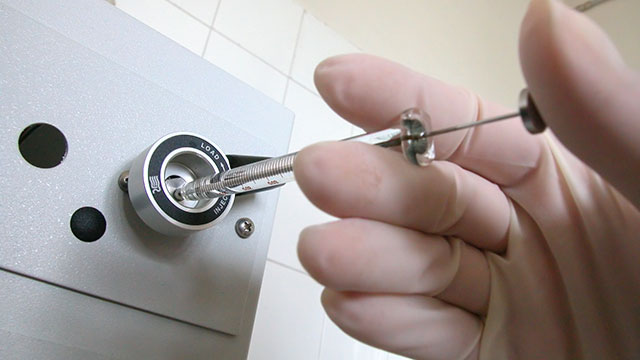
Maintenance Tip: Chromatography ColumnsCleaning your columns regularly is an important part of keeping them in good shape as a lot of gunk can build up on top of columns over time. Depending on the type of column you have, this can be done by reverse flow or manually turning the column upside down to remove any build-up. Keeping a logbook of the columns you use and the pressures they hold is also important to avoid issues. |
How does the sample matrix affect which type of column should be used?
The sample matrix can have an effect on the type of surface chemistry that is applied to the column being used. The most commonly used type—reverse phase chromatography—will use non-polar packing (C18, C8, C3 etc.) and has uses for non-polar, polar, ionisable, and ionic molecules. For water-sensitive compounds, and isomers which are geometric or cis-trans, normal phase or adsorption chromatography is used. These columns are polar packed (silica gel, cyanopropyl-bonded, amino bonded). For analyses looking at RNA polymerase, chymotrypsinogen, or lysozyme, ion exchange chromatography is used. This type of chromatography utilizes column packing containing ionic groups (sulfonic, tetraalkylammonium, etc.)
Will the analyte(s) of interest influence which column is best suited for the analysis?
Yes—monolithic columns are best suited for compounds which are known to elute far apart from each other—such as peptides with highly differing polarities. They are also useful for analyzing dirty samples such as plasma. Fully porous solid core columns offer greater retention of lightly held analytes such as hydrophilic polar compounds. Depending on how small a pore size these columns have, they may require a UHPLC system due to the pressure required. Superficially porous solid core columns offer greater speed for the separation of high molecular weight compounds such as peptides and proteins. However, these columns come with less surface chemistry options.
Will the type of column used have an effect on the cleaning procedure of the column?
Yes; the types of samples analyzed will also have an effect. Reversed phase columns can be flushed with buffer free mobile phase, methanol, acetonitrile, and IPA. Alternatively, if these columns are used for protein and peptide analysis, they may need to be flushed with buffer free mobile phase, and TFA in a water/acetonitrile mixture. Column vendors will be able to provide in-depth cleaning protocols for any style of column and application used.










